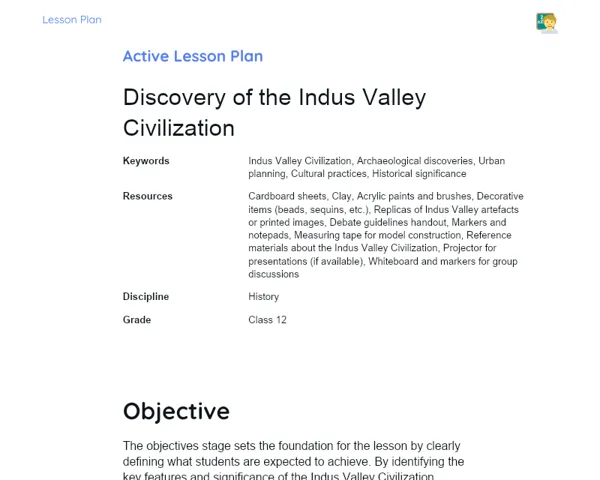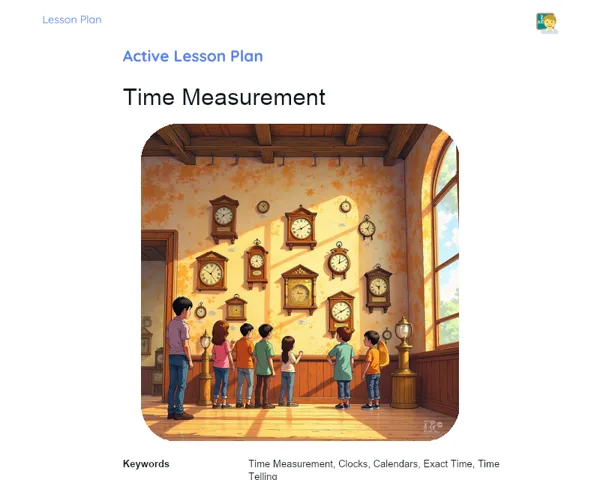Lesson Plan | Socioemotional Learning | Chinese Communist Revolution: Review
| Keywords | Chinese Communist Revolution, History, High School, Socioemotional, Self-awareness, Self-control, Responsible Decision Making, Social Skills, Social Awareness, RULER, Mindfulness, Simulated Debate, Empathy, Social Justice, Reflection, Emotional Regulation |
| Resources | History textbooks, Class notes, Online resources (articles, videos, etc.), Computers or tablets for research, Paper sheets, Pens or pencils, Board and markers, Clock or timer |
| Codes | - |
| Grade | 12th grade |
| Discipline | History |
Objective
Duration: 10 to 15 minutes
This phase of the Socioemotional Lesson Plan aims to build a clear and thorough understanding of the lesson's objectives, setting the stage for students as we delve into the topic. It also seeks to bridge socioemotional competencies with historical insights, encouraging students to acknowledge and comprehend the emotions and motivations embedded in the Chinese Communist Revolution, thereby fostering a more empathetic and contextualized learning atmosphere.
Objective Utama
1. Grasp the core social and cultural motivations that led to the Chinese Communist Revolution.
2. Identify the traits of communism in China and their impact on Chinese society.
Introduction
Duration: 15 to 20 minutes
Emotional Warmup Activity
Mindfulness for Focus and Presence
The emotional warmup activity employs a Mindfulness practice. Mindfulness, which involves focusing awareness on the current moment, aids in reducing stress and boosting concentration. This practice is beneficial in mentally preparing students for the lesson, instilling a sense of calm and clarity in their minds.
1. Preparing the Environment: Request students to sit comfortably in their chairs, feet flat on the ground and hands resting on their laps. Encourage them to either shut their eyes or focus their gaze on a particular point ahead.
2. Initial Breathing: Have students take deep breaths, inhaling through their nose and exhaling through their mouth. Repeat this pattern three times, urging them to be mindful of the air entering and leaving their bodies.
3. Focus on Breathing: Instruct students to pay attention to their natural breathing, observing the rhythm and depth of each inhalation and exhalation. Encourage them to keep their focus on their breath for a few minutes, noting any thoughts or distractions that arise and gently redirecting their attention back to their breathing.
4. Sensory Exploration: Invite students to widen their awareness to other sensations in their bodies, such as the feeling of their feet touching the ground, the texture of their clothes against their skin, or the surrounding sounds. Encourage them to explore these sensations non-judgmentally.
5. Closing: Gradually ask students to shift their focus back to the classroom by moving their fingers and toes and opening their eyes. Conclude the activity by inviting them to briefly share how they feel after the practice.
Content Contextualization
The Chinese Communist Revolution stands as a pivotal chapter in global history, having significant social and cultural ramifications. To understand the motivations behind this event, it is crucial to consider the emotions and human needs of that era. For instance, the peasants faced severe oppression and dire poverty, fostering an earnest longing for change and social justice. By delving into these emotional aspects, students can cultivate a more empathetic and contextualized comprehension of historical events.
Furthermore, it's vital to recognize that this revolution was not merely a political shift, but also a transformative social process that influenced millions of lives. Gaining insight into the emotional triggers and impacts of the Chinese Communist Revolution can help students reflect on contemporary issues surrounding social justice and equality, enhancing their social awareness.
Development
Duration: 60 to 65 minutes
Theory Guide
Duration: 25 to 30 minutes
1. Historical Context: Illustrate the scenario of China prior to the Communist Revolution, covering the Qing dynasty, the Opium War, the Xinhai Revolution, and the establishment of the Republic of China in 1912. Detail how these events fostered political and social turbulence.
2. The Chinese Civil War: Describe the conflict between the Nationalist Party (Kuomintang) and the Chinese Communist Party (CCP). Explain the approaches and tactics utilized by both factions, emphasizing the Long March (1934-1935) as a critical juncture for the CCP.
3. Leadership of Mao Zedong: Introduce Mao Zedong as the key figure in the revolution, exploring his ideologies and strategies. Provide examples of his policies and their effects on the revolution's trajectory.
4. Agrarian Reforms: Clarify how the agrarian reforms advanced by the CCP gained the support of the peasants. Use analogies from agrarian reform scenarios in other nations to aid understanding.
5. Social and Cultural Impact: Describe the societal and cultural shifts that ensued after the revolution, such as land collectivization, the formation of people's communes, and the Cultural Revolution, along with their implications for Chinese society.
6. Conclusion of the Revolution: Discuss the CCP's triumph in 1949, the establishment of the People's Republic of China, and the initial years of communist governance, including the rollout of socialist policies.
Activity with Socioemotional Feedback
Duration: 30 to 35 minutes
Simulated Debate: Motivations and Consequences of the Chinese Revolution
In this activity, students will engage in a simulated debate where they will represent various social groups from pre-revolutionary China (peasants, urban workers, intellectuals, Kuomintang members, and Communist Party supporters). The objective is to discuss and comprehend the differing motivations and consequences of the Chinese Communist Revolution, fostering empathy and social awareness.
1. Group Division: Split the class into small groups, each portraying one of the aforementioned social groups.
2. Research and Preparation: Allocate 10 minutes for students to examine the roles and perspectives of their social group during the Chinese Communist Revolution. They may utilize textbooks, class notes, and online resources.
3. Simulated Debate: Conduct the debate, where each group will present their motivations, concerns, and expectations regarding the revolution. Encourage them to articulate their emotions and feelings, drawing on the RULER method (Recognize, Understand, Label, Express, Regulate).
4. Discussion of Consequences: Following the debate, prompt the groups to discuss the revolution's consequences for their specific social groups, considering both the positive and negative viewpoints.
5. Final Report: Each group should compile a brief report summarizing the outcomes of their discussion to share with the class.
Discussion and Group Feedback
After the activity, gather the students for a discussion about their experiences during the debate. Begin with the RULER method:
Recognize: Ask students to identify the emotions they felt during the debate and explain the reasons behind those emotions.
Understand: Encourage them to explore the causes of those emotions and how they influenced their engagement in the debate.
Label: Prompt them to accurately name those emotions and examine how different emotions shaped their contributions in the debate.
Express: Guide students to communicate how these emotions impacted their interactions with peers, highlighting instances where communication was either facilitated or hindered.
Regulate: Discuss techniques that could be used to manage these emotions in the future, fostering a more constructive and empathetic debate environment.
Conclusion
Duration: 20 to 25 minutes
Reflection and Emotional Regulation
To reflect on the challenges faced during the lesson and how students navigated their emotions, the teacher can initiate a group discussion. Ask students about the most challenging moments of the lesson and how they felt throughout those moments. Subsequently, have them share the strategies they employed to cope with those emotions and whether they perceived them as effective. Alternatively, students may be tasked with writing a brief paragraph reflecting on these matters, encouraging a more introspective self-assessment.
Objective: The aim of this reflection and emotional regulation activity is to encourage students to evaluate their emotions and behaviors throughout the lesson. This self-assessment helps in identifying effective strategies for tackling challenging situations, fostering continuous development of self-awareness and self-control skills, which are vital for socioemotional growth.
Glimpse into the Future
To establish personal and academic goals related to the lesson content, the teacher can request students to jot down two personal goals and two academic goals they aspire to attain in the future. Personal goals may relate to developing socioemotional skills, such as enhancing emotional regulation or empathy. Academic goals can focus on deepening knowledge about the Chinese Communist Revolution or other historical events.
Penetapan Objective:
1. Enhance understanding of the Chinese Communist Revolution.
2. Improve skills in debating and arguing grounded in historical facts.
3. Develop the ability to identify and regulate emotions during academic discussions.
4. Cultivate empathy by understanding the viewpoints of diverse social groups in historical contexts. Objective: The objective of this subsection is to bolster students' independence and the practical application of their learning, motivating them to set and pursue personal and academic goals. This encourages a continuous journey in both academic and personal growth, paving the way for a future where historical knowledge blends with socioemotional skills for a well-rounded and conscious education.



